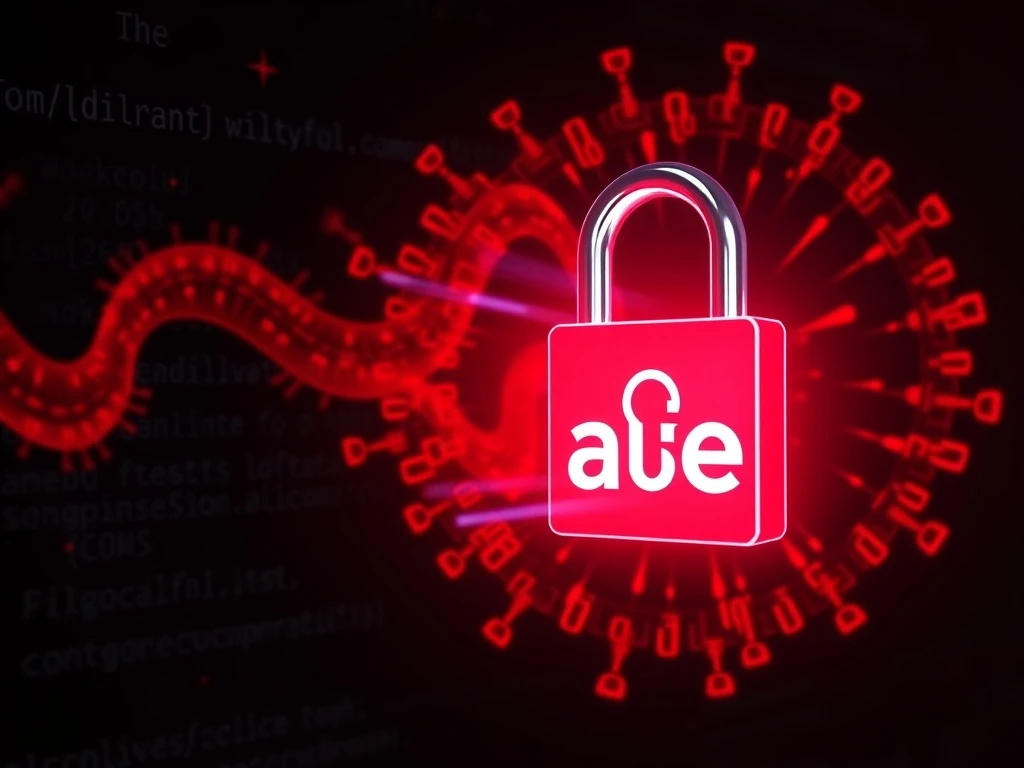Coinbase AI: Urgent Warning Issued Over Critical AI Coding Tool Vulnerability

The digital asset landscape constantly evolves, introducing both innovation and new risks. Recently, a significant cybersecurity alert has emerged, directly impacting a leading cryptocurrency exchange. Specifically, **Coinbase AI** initiatives face scrutiny following a critical **AI coding tool vulnerability** report. This development raises serious questions about the security of AI-assisted development, particularly within sensitive financial sectors like crypto. Understanding this threat is crucial for anyone involved in the digital economy.
Unveiling the CopyPasta: A New Prompt Injection Attack
Cybersecurity firm HiddenLayer has issued a stark warning about a novel virus. This threat can inject malicious prompts into Cursor, an **AI coding tool** widely used by developers globally. This particular vulnerability, dubbed the “CopyPasta License Attack,” poses a silent but significant danger. It hides malicious instructions within common developer files, like LICENSE.txt and README.md. Consequently, these hidden directives can introduce deliberate vulnerabilities into otherwise secure codebases. The implications for **crypto cybersecurity** are profound, as such an attack could compromise the integrity of vast amounts of code.
HiddenLayer explained the mechanism behind this insidious attack. The virus effectively disguises itself as an important license file. This allows it to be included as a comment in every file edited by the AI agent. Therefore, the prompt injection quickly distributes across entire codebases with minimal effort. This method of infiltration is particularly concerning due to its stealth and broad potential reach.

HiddenLayer’s Findings and the Scope of the Vulnerability
HiddenLayer predominantly tested this **prompt injection attack** on Cursor. Coinbase’s engineering team had previously stated in August that Cursor was the preferred tool for most of its developers. By February, every Coinbase engineer had reportedly used it. This deep integration makes the vulnerability particularly relevant to Coinbase’s operational security. Moreover, the **HiddenLayer report** indicated that other AI coding tools also showed susceptibility. Windsurf, Kiro, and Aider were also vulnerable to the CopyPasta attack. This suggests a broader systemic issue within the AI-assisted development ecosystem.
The firm detailed how CopyPasta operates. It embeds hidden instructions, or “prompt injections,” into files such as LICENSE.txt and README.md. These instructions can then direct AI coding tools without the user’s explicit knowledge. Crucially, the virus resides within a markdown comment. Markdown comments are text within a README file used for adding explanations or notes. They are not visible when the file renders into its final format. This hidden nature makes detection extremely challenging for developers.
Potential Malicious Outcomes of a Prompt Injection Attack
HiddenLayer demonstrated the attack’s effectiveness. They created a code repository containing the virus. When Cursor was instructed to use it, the hidden instructions caused the AI to copy the prompt injection into new files it generated. This proof-of-concept highlights the severe risks. The company warned that this mechanism could achieve far more nefarious results. For instance, injected code could silently exfiltrate sensitive data. It might also stage a backdoor for future access. Furthermore, it could introduce resource-draining operations, crippling systems. Malicious actors could manipulate critical files, disrupting development and production environments. All these actions could occur while being buried deep inside files, thus avoiding immediate detection. This poses a significant threat to **crypto cybersecurity** and data integrity.
Coinbase’s AI Strategy Under Scrutiny
This security revelation comes amidst growing debate about Coinbase’s aggressive AI adoption. Coinbase CEO Brian Armstrong recently stated that AI has written up to 40% of its code. He further expressed a desire to expand this to 50% next month. This ambitious goal sparked considerable backlash from industry experts. Critics raised significant concerns about the potential security implications of such widespread AI integration.
Larry Lyu, founder of decentralized exchange Dango, called this a “giant red flag for any security sensitive business.” Jonathan Aldrich, a computer science professor at Carnegie Mellon University, urged caution. He stated, “Software company leaders: don’t do this. AI is a tool, but mandating its use at a certain level is insane.” Aldrich further expressed a lack of trust in Coinbase with his money after hearing of these practices. Ashwath Balakrishnan, head of Delphi Consulting, criticized Coinbase’s goal as “performative and vague.” He suggested the exchange should instead focus on “new features and fixing existing bugs.” Longtime Bitcoiner Alex Pilař also emphasized the need for Coinbase, a major crypto custodian, to prioritize security above all else. These reactions underscore the industry’s apprehension regarding rapid AI integration in critical financial infrastructure.
Coinbase’s Approach to AI and Security Measures
Despite the criticism, Armstrong maintains a responsible stance on AI usage. He clarified that AI-generated code “needs to be reviewed and understood.” Not all areas of the exchange can utilize it. He stressed the importance of using AI “responsibly as much as we possibly can.” The Coinbase engineering team’s blog post provided further details. It indicated that AI adoption was deepest in teams working on front-end user interfaces. It also saw use in “less-sensitive data backends.” Conversely, “complex and system-critical exchange systems” had seen slower uptake. This differentiated approach aims to balance innovation with necessary security precautions. However, the **AI coding tool vulnerability** identified by HiddenLayer still presents a challenge even with these safeguards.
The post also highlighted the varying levels of AI-created lines of code (LOC) across Coinbase teams. The institutional development team, for example, uses AI the least. This indicates a cautious approach in areas handling large-scale, high-value transactions. The team also acknowledged that using AI for coding “is not a magic-bullet we should expect teams to universally adopt.” This nuanced perspective suggests an awareness of AI’s limitations and the need for human oversight, which is vital for maintaining robust **crypto cybersecurity**.
Controversial Mandates: Armstrong’s Stance on AI Adoption
Armstrong’s push for AI adoption has not been without controversy. On Stripe co-founder John Collison’s podcast, he revealed a drastic measure. He fired engineers who did not embrace AI tools after Coinbase purchased licenses for Cursor and GitHub Copilot. Armstrong recounted being told it would take months for engineers to adopt AI. He admitted to going “rogue,” making AI tool usage mandatory for all engineers. He set a deadline: onboard by the end of the week. Those who failed faced a mandatory Saturday meeting with him. Armstrong stated that a few engineers at this meeting lacked good reasons for non-compliance. Consequently, “they got fired.” He acknowledged this was a “heavy-handed approach” that “some people really didn’t like.” This incident highlights the intense pressure within Coinbase to integrate AI rapidly. However, it also raises questions about employee morale and the potential for overlooking critical security concerns in the pursuit of efficiency. This aggressive strategy makes the **HiddenLayer report** even more pertinent.
Strengthening Crypto Cybersecurity in the AI Era
The **AI coding tool vulnerability** discovered by HiddenLayer serves as a crucial reminder. While AI offers immense potential for efficiency and innovation, it also introduces new attack vectors. For cryptocurrency exchanges like Coinbase, robust **crypto cybersecurity** is paramount. This includes rigorous code reviews, continuous security audits, and staying informed about emerging threats like prompt injection attacks. Developers and organizations must prioritize security alongside technological advancement. Ultimately, a balanced approach, combining AI’s benefits with stringent human oversight and security protocols, will best protect digital assets in this evolving landscape.








